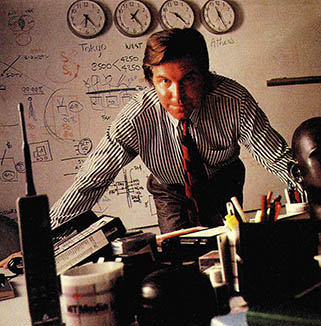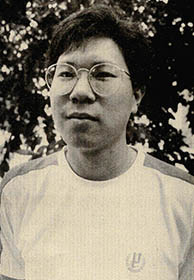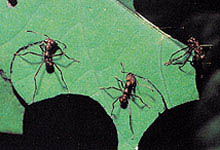아이다호 국립 공학 연구소에 있는 과학자팀은 1990년 4월에 저급의 광석에서 코발트를 추출하는 데 박테리아를 이용해 왔다고 보고했다.
이것은 인간이 지난 5천년 동안 몰두해 왔던 금속에 관한 연구를 수행하는데 있어 매우 새롭고 중요한 기술일 수 있다. 돌은 깎아내거나 갈아야하는 반면, 금속은 두들겨 쉽게 형태를 만들 수 있다는 강점으로, 석기 시대의 막을 내리게 했다. 금속은 석기보다 더 굳고 단단하며, 깨지지 않아 보다 영구적인 날을 가질 수 있었다.
그러나 단 한가지 곤란한 문제가 있었다. 금속은 바위보다 구하기가 훨씬 어렵다는 점이다. 사실 '금속'이란 단어도 '찾는다'라는 뜻을 지닌 그리스어에서 유래한 것이다.
처음엔 금 은 구리 유성철처럼 원모습으로 발견되는 금속만이 이용가능했다. 그러나 어떤 암석 형태의 광석에 열을 가하고 녹여 금속을 뽑아 낼 수 있음이 밝혀지면서 금속에 대한 공급은 증가했다. 따라서 야금술은 인류 문명의 초기에 하나의 주요 이정표로 기록된다. 그렇지만 금속은 여전히 부족했다. 구리는 사용하기에 너무 물렀으나 주석과 혼합시켜 만든 청동은 훨씬 더 단단했다. 따라서 청동은, 철광석을 녹이는 효율적인 방법이 밝혀지기 전까지, 각종 기구의 무기(청동기 시대)로 사용됐다.
하지만, 주석은 매우 드물어 B.C. 1천년에 이르자 초기 개화에 유용했던 주석 광석은 거의 고갈됐다. 이것이 자원고갈의 첫번째 사례일 것이다. 페니키아인들은 대서양을 항해하여 현재의 영국의 콘월로 짐작되는 '주석섬'에서 주석광석을 발견하고 독점하여 철의 등장으로 주석이 상대적으로 쓸모 없어질 때까지 부를 축적할 수 있었다.
그때 이후로, 인류는 금속을 얻기 위해 금속이 매장되어 있는 천연광석 매장지를 찾아서 전 세계를 누비기 시작했다. 이에 금 은 구리 철뿐만 아니라 근래에 들어서는 더 새로운 금속이 발견됐다. 니켈 코발트 텅스텐 망간 크롬 바나듐 니오비늄 등등 새롭게 발견된 금속들은 나름대로의 유용성을 갖고 있다.
필요한 광석 매장지는 모조리 파헤쳐졌고, 금속들은 용해됐다. 그런 다음 사람들은 그 금속을 사용했으며, 나중에는 쓰레기로 취급했다. 결국 금속 포함률이 많은 광석지는 다 노출됐고 야금학자들은 금속성이 약한 광석에서 경제적으로 금속을 얻어내는 법을 배우게 됐다. 금속이 다 소모된 것은 아니지만 지구의 표면에서 금속포함률은 자꾸만 낮아져 갔다. 따라서 더 많은 금속에 대한 욕구는 점점 심각한 문제로 등장하게 된 것이다.
많은 단순 생명체들은 인간의 기술보다 더 훌륭하게 저급자원으로부터 특정요소를 추출해 내는 능력을 지니고 있다. 한 예로 요오드를 들 수 있다. 요오드는 대단히 유용하지만 매우 귀한 금속이다. 이 금속은 해수에서 찾을 수 있는데 화학자들조차도 요오드를 마음껏 추출하기 힘들다. 그러나 해초는 가능하다. 해초가 방대한 양의 바닷물에서 그 희박한 요오드를 걸러내면, 인간은 그 해초를 수확하여 태우고, 재 속에서 요오드를 분리해 낼 수 있다. 해초가 바로 인간이 쓸 요오드를 파 내는 광부인 것이다.
실제로, 미네랄을 먹고 사는 '티오바실러스페록시단스'라는 박테리아가 있다. 이것은 미네랄에서 유황원자를 뽑아내어, 살아가기 위한 에너지를 얻기 위해 산소와 결합시킨다. 그러한 과정에서 이 박테리아는 미네랄을 부수어 또 다른 형태의 원자들을 방출한다. 이 과정에서 비소와 시안화물 같은 독소를 만들어내므로 광부들에게 이 박테리아는 위험스러운 존재일 수 있다.
그러나 적절히 통제된 상황에서 이 특별한 박테리아는 인간기술이 경제적으로 뽑아 내기에는 너무 적은 코발트를 함유하고 있는 광석에서도 번식하는 것이 발견됐다.
이 박테리아는 얼마동안 미네랄을 갉아 먹는데, 그 사이에 코발트 함유량의 10%가 쉽게 분해될 수 있다. 지금까지 아이다호 국립 공학 연구소에 있는 과학자들은 단지 소규모 표본으로 이 연구를 해왔으나, 앞으로는 대규모 기술연구로 발전시킬 수 있을 것이다.
콜로라도에 있는 미국 골드사는 소량의 금을 함유하고 있는 광석에서 금을 얻기 위해 여러종류의 티오바실러스 페록시단스 박테리아를 활용해왔다. 이 방법으로 금을 더 쉽게 그리고 많이 얻어낼 수가 있었다.
다양한 종류의 광석에서 서식할 수 있는 박테리아의 특질을 개발하는 것이 가능하다면 지금까지 비경제적이라고 판단됐던 광석에서 여러종류의 금속을 얻을 수 있게 된다. 그 뿐만이 아니다. 우리가 쓰다버리고 다시 활용하지 못하는 금속 폐기물에서도 박테리아가 작용하도록 할 수 있을지 모른다.
만일 이 산업성 있는 박테리아가 그들에겐 영양분이 되는 폐기물에서 서식하면 쓰다버린 금속은 재활용될 수 있다. 그런 경우에 우리는 금속을 다 소모시켜 버리는 일은 결코 없을 것이다.
The Bacterial Miners
A group of scientists at the Idaho National Engineering Laboratory reported in April', 1990, that they have been using bacteria to help release cobalt from low-grade ores.
This could well represent a new and extremely important technique for carrying on the search for metals - something that human beings have been engaged in for 5,000years. It was metal that brought the stone age to an end, for metals could be easily beaten into shape, whereas stone had to be chipped or ground. Metals were harder and tougher than stone tools, less breakable, and held a more permanent edge.
There was only one catch. Metals were far harder to find than rocks. The very word 'metal' is from the Greek word meaning 'to search for.'
At first, only those metals could be used that could be found in free form -- gold, silver, copper and meteoric iron. When it was discovered that certain rocky 'ores' could be heated and smelted, and force to yield metals, that increased the supply of these desirable materials. Metallurgy, therefore, became one of the marks of early civilization. Even so, metals remained scarce. Copper itself was too soft to use for tools, but when mixed with tin, it become 'bronze,' which was much harder. Bronze was used for tools and weapons(the 'Bronze Age') until efficient methods for smelting iron ore were discovered.
Tin, however, is quite rare, and the sources of tin ore available to early civilization were just about used up by 1000B.C. This was the first case of the actual disappearance of a resource. The Phoenicians traveled vout into the Atlantic Ocean and discovered tin ore in the 'Tin Isles,' which may have been Cornwall in England, and grew rich by monopolizing this valuable material until iron made it comparatively obsolete.
Since then, human beings have searched the world over for natural concentrations of ores containing desirable metals. It was not only a matter of gold, silver, copper and iron, but newer metals discovered only in modern times. Nickel, cobalt, tungsten, manganese, chromium, vanadium, niobium and so on, all had their valuable uses.
High concentrations of the necessary ores were dug up and smelted. The metals were then used and, eventually, discarded as scrap. The highest concentrations were used up and metallurgists learned to used poorer concentrations and get the metals out of them economically. The metals are never 'used up,' but they are spread out over the Earth's surface in lower and lower concentrations, and getting more of these materials becomes an ever-increasing problem. Many simple life forms are more able to concentrate certain elements out of very low-grade sources than any human technology can. For instance, iodine is a useful element that is very rare. It occurs in sea-water, but in such low concentration that chemists cannot extract it profitably. However, seaweed can do it. It filters the rare iodine out of vast quantities of sea water, and then human beings can harvest the seaweed, burn it, and isolate iodine from the ash. Seaweed is our iodine-miner.
There is a bacterium called 'Thiobacillus ferroxidans' that actually lives on minerals. It extracts sulfur atoms from the minerals and combines them with oxygen to obtain the energy to live on. In so doing, the bacterium break ups the mineral and releases other types of atoms. This can result in the liberation of such poisons as arsenic and cyanide, so that to miners, the bacterium could be dangerous.
However, under properly controlled conditions, particular varieties of this bacterium were found to flourish on ores that contain cobalt in concentrations too low to be economically smelted by human beings.
When the bacteria have gnawed away at the mineral for a while, 10 percent of the cobalt content can be easily dissolved out, So far, the people at the Idaho National Engineering Laboratory have made this work only on small-scale, but there's no reason it can't be made into a large-scale technique eventually.
The United States Gold Corporation in Colorado has also been using varieties of Thiobacillus ferroxidans to grow on ores containing tiny quantities of gold. In this way, the gold content can be made more available.
It may be possible to develop strains of bacteria that can live on a wide variety of ores so that metals of all sorts can be obtained from sources that would ordinarily be given up as uneconomical. In fact, there may be more than that. We might, conceivably, set them to work on metal scrap which has been discarded by us and which cannot be profitably recycled.
The industrious little bacteria may live on the scrap, if it is mixed with the proper kind of what is to them nutritious rock, and they will them recycle the metals for us. In that case, we will never run out of metal.
이 기사의 내용이 궁금하신가요?
기사 전문을 보시려면500(500원)이 필요합니다.
1990년 08월 과학동아 정보
🎓️ 진로 추천
- 화학·화학공학
- 생명과학·생명공학
- 환경학·환경공학
1990년 08월 과학동아 다른추천기사

















